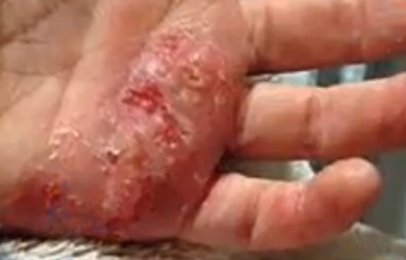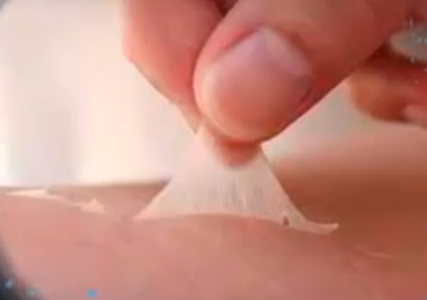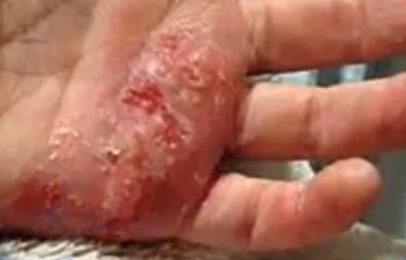People who suffer from a form of eczema that presents itself through the formation of small blisters on the palmar and plantar skin, is called dyshidrotic eczema. The condition is accompanied by an intense urge to scratch the affected areas. The itching is also followed by the formation of painful cracks in the skin and scales. This condition is often confused with allergic contact dermatitis, and a patch test must be done. The test will tell whether the symptoms that you are exhibiting may have come from contact with an allergen, or whether you are suffering from this condition. The dermatitis can occur as a secondary etiology of the disease. This condition occurs at certain periods during an adult’s life.
What are the causes of dyshidrotic eczema?
There was a theory that a dysfunction of sweat gland was the primary cause of dyshidrotic eczema, but this theory has since been disputed. It was proved that the vesicles (blisters) which form on the skin are not associated with sweat glands. This was proved in a study carried out in 2009 and histopathologic evidence showed that there was no link between the glands and the condition. However, 40% of patients develop the condition due to hyperhydrosis.
As with other forms of eczema, dyshidrotic eczema can be caused by emotional trauma. If a person who has this condition, or is predisposed to develop it, goes through emotional trauma, then the condition will occur. Environmental factors have also been linked to the recurrence of dyshidrotic eczema, and one should take note of which weather causes the condition to flare up. The use of intravenous immunoglobulin infusion has also been found to lead to the condition flaring up.
There are several exogenous factors which can cause the condition to appear. Ingestion of certain metals, such as nickel, cobalt and balsam will cause the condition to occur. Similarly an infection by a virus or bacteria will cause the disease to occur.
What are the symptoms of dyshidrotic eczema?
People who suffer from this condition will notice small fluid-filled blisters of the palms, fingers of the hands, and soles of the feet. Commonly they will be found along the edges of the hand, the toe, palms and soles. The blistering is accompanied by persistent itching, and the skin develops a scaly look and may become thicker. The small blisters are painless, but when they come together to form large blisters, they become painful.
Diagnosis
Upon visiting the doctor, a person with dyshidrotic eczema, will have to give his or her medical history. The doctor will need clinical information in order to exclude other skin diseases as the precursor of the condition. The doctor has also to rule out other etiological factors that could be causing the condition, such as contact with allergens, atopy (asthma, and allergic reactions), physical irritation or fungal infections. These factors cause the skin to form similar blisters and the doctor has to know whether the patient has suffered through them, before he can rule that the condition id in fact dyshidrotic eczema. Other factors that the doctor has to rule out are diseases such as psoriasis, hand-foot-mouth-disease, epidermolysis bullosa hereditaria, enteropathica and scabies in babies. These conditions manifest in a similar manner to dyshidrotic eczema.
The doctor will also ask for a biopsy of the skin for further examination in the laboratory. He or she will conduct a patch test in order to find out if there are allergens that have caused the condition to occur.
What it the treatment for dyshidrotic eczema?
The treatment of dyshidrotic eczema is done through the use of topical corticosteroids. The results will be better if the corticosteroids are applied through plastic occlusion. The doctor will also give you antihistamines to combat the feeling of scratching the affected areas. If a patient gets a serious attack, he or she may have to be given oral or intramuscular corticosteroids through an injection. If there is a secondary infection of the affected areas, then the patient may require antibiotics.
How to avoid the frequent flare ups?
Although the patient may get treatment, it is better for the patient to be instructed on how to prevent the condition from occurring in the first place. The patient should avoid contact with allergens or irritants, such a nickel. The patient should also follow special hand care routines to ensure that there are no allergens on them. The patient should use emollients, to hydrate the skin, severally. This condition is very difficult to treat and the patient needs to be very careful to avoid all factors that cause it to flare up, including stress.
If your loved one suffers from this condition, it is good that you keep him or her away from stressful situations, which have been known to cause the condition to last much longer.
Dyshidrotic Eczema Pictures




